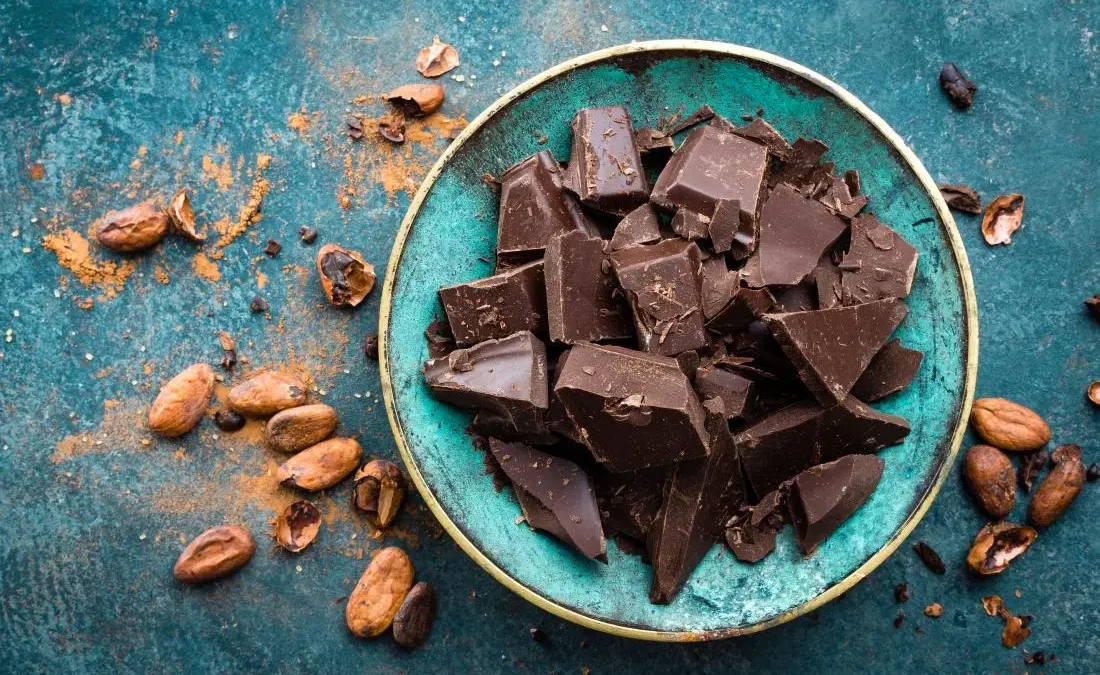Chocolate, whose World Day was commemorated on September 13, as a nod to the birth of the author of Charlie and the Chocolate Factory, by writer Roald Dahl, is one of the most famous foods around the globe. This product “is obtained by mixing sugar, cocoa paste and cocoa butter.
“From this combination and the proportion between the different components and the mixture, or not, with other products, such as milk or nuts, the different types of chocolate are obtained”, adds the expert, who confirms that “chocolate is a food that could occasionally be included in a balanced diet .”
The condition, in this sense, is that “it is not consumed excessively and taking into account a load of sugar and fat it provides. Indeed, the different types of chocolate vary in their sugar and butter content, which makes the benefits of the food present or diluted.
Which is the best?
The typology of chocolate is extensive and can be adapted to almost all tastes: from black to white, including cocoa powder, it is easy to find different varieties of chocolate. For example, dark chocolate “contains cocoa solids, cocoa butter and sugar. The percentage that usually accompanies it refers to the percentage of cocoa solids and butter to the sugar contained “the higher the percentage, the higher bitterness and astringent potential”.
Between black and white is milk chocolate. “It contains milk solids and a high amount of sugar.
This sum “is greater than the solids of cocoa and butter,” adds the expert. Its low cocoa butter content makes it ” softer and less crunchy.
As for the chocolate to cover, it is “dark or milk chocolate formulated to flow well when melted,” explains the specialist in Endocrinology and Nutrition. The expert highlights that it contains a ” high butter content, between 31 and 38 per cent, to increase the fluidity of the cocoa and sugar particles.” Lastly, there is cocoa powder. “It is produced from the masses of roasted particles that remain when the cocoa butter is extracted. The butter content is between 8 and 26 per cent.
“The difference between white and dark chocolate is the proportion between cocoa butter and cocoa paste,” continues the specialist in Endocrinology and Nutrition. “In the case of white chocolate, the percentage of cocoa butter is maximum, while in the case of black chocolate, the percentage is much lower and varies depending on the degree of cocoa. In the case of milk chocolate, the so-called milk solids normally predominate, which means that dark chocolate “has a higher cocoa content”.
In this context, in terms of benefits, the most recommended would be dark chocolate, precisely because of its cocoa content. “The cocoa solids contained in dark chocolate contain polyphenols and alkaloids, theobromine and caffeine, which could have a certain healthy effect at a cardiovascular level, at a satiety level and a neuropsychological level “, points out the SEEN member, who, despite, warns that “scientific evidence is contradictory in this regard.”
“If we assume that most of the potentially beneficial properties are associated with the cocoa content when choosing, the most recommended would be dark chocolate,” says Dr López, who insists that “it is important to highlight the percentage of cocoa from said dark chocolate, given that the higher the percentage, the lower the sugar content “.
IS CHOCOLATE AN ANTIDEPRESSANT?
Certainly, anxious people with depressive tendencies tend to eat a lot of sugar and, therefore, chocolate. Chocolate contains plenty of magnesium and compensates for the lack of the latter, caused by a too restrictive diet due to the fear of gaining weight. Magnesium has an important role in the nervous system.
Disadvantages
Chocolate carries, however, damage to health related to its caloric intake, fats and sugars. “The caloric load provided by chocolate can condition weight gain if it is not consumed in a balanced way,” recalls the expert. In addition, “some of the types of nutrients it contains, fats and sugars, in greater or lesser content depending on the type of chocolate, in addition to causing an increase in caloric load, if consumed in excess can compromise metabolic diseases, such as dyslipidemias and diabetes mellitus “, says Dr López.
Therefore, although the caloric load of chocolate is “variable” but “normally high given the fat and sugar content”, the SEEN member clarifies that its consumption “in excess and, above all, in unhealthy dietary patterns, can lead to weight gain “, ditch the doctor specialist in Endocrinology and Nutrition.
Rana Madanat
Related posts
Recent Posts
Recent Posts
- Why Buying Wholesale Nuts From Truly Good Foods Is a Great Idea for Your Business
- Having Candy Makes Life Better
- Exploring the Wonders of Cryogenic Freezers
- What are the benefits and drawbacks of using an electric oven compared to other types of ovens?
- Catering Italian Cuisine: The Ultimate Guide to a Memorable Event

